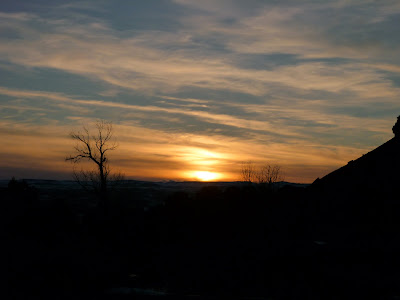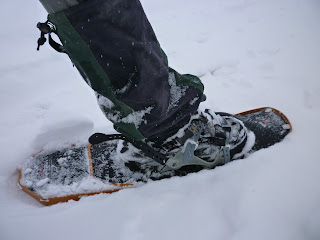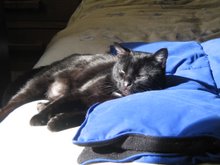1) Thirst
2) Drowning
The first one seems obvious, of course. Deserts = dry, godforsaken places in most minds. But are you remotely surprised by #2? Then read on.
The result was much greenery (and, frankly, much bitching from many residents during lawnmowing time) and much, much water. In a desert environment such as this one (high clay content in the soil, low saturation levels), water from the sky doesn't absorb into the ground very quickly or much. If it did, we'd be Oregon.
What does unsaturated water do? It flows above ground. During or soon after a big storm, it flows damn fast. Flash floods are awesome, gorgeous, terrifying, oddly smelly, loud, powerful, and often quite unexpected to the hikers they overtake. Or so I'm told. I've never been close to a major one. Part of me wants to. Part of me says, thank god. Don't wanna see one after some of the stories I've heard. Watching a small one and allowing my imagination to grow it exponentially is enough for me.
Point is, during the summer you can get really, really thirsty in the desert (seems duh, but it can happen), or you can get really, really wet and cold, and even swept away by a raging wall of water. Most people never think about the second possibility, especially not when they're hiking on a hot August day.
So without further ado, here's how you go about avoiding these demises should you choose to go adventuring in the southern Utah desert during a scorching summer month.
4 Ways to Not Die of Thirst in the Desert
1) Drink water. I'm serious! Bring it, drink it, pee it out, drink it more. If you're not peeing clear, you're dehydrated. People come from lower elevations, they never drink water at home, they survive on sugary caffeinated drinks, yadda yadda yadda. I don't care. A gallon of water per person per day is the rule of thumb, if you're out all day. Bonus tip: add an electrolyte to your water, such as Camelbak Elixir or Emergen-C. Keep those electrolytes flowing, baby. All water and no salts in your body (hyponatremia) can also make for a very unhappy day.
 2) Know where you're going. You can drink all the water you have on you, but if you get lost on the way to wherever you're heading, that might not be enough to help you survive. Especially because deserts, as we know, are deserts because they don't have a lot of water hanging around in the form of streams or lakes to drink from. Know the trail, take a guide, be familiar with map and compass skills, use your GPS (don't rely on those things, though--yes, I'm a skeptic), use your noggin. Not sure if you veered off trail? Stop. Backtrack following your actual tracks until you're positive of your whereabouts. Then either keep going if you're sure, or go back to your car.
2) Know where you're going. You can drink all the water you have on you, but if you get lost on the way to wherever you're heading, that might not be enough to help you survive. Especially because deserts, as we know, are deserts because they don't have a lot of water hanging around in the form of streams or lakes to drink from. Know the trail, take a guide, be familiar with map and compass skills, use your GPS (don't rely on those things, though--yes, I'm a skeptic), use your noggin. Not sure if you veered off trail? Stop. Backtrack following your actual tracks until you're positive of your whereabouts. Then either keep going if you're sure, or go back to your car.3) Wear proper clothing. Light colors, light weave, loose fit. Synthetics good, cotton bad. Hiking in tight, dark, heavy clothes (yes, that means jeans) traps your sweat, makes you feel icky, and can actually help you reach a state of hyperthermia. (Also known by the pleasant names of heat stroke, heat exhaustion, etc.)
4) Pay attention to your body. Got any of this going on? Breathing heavily, rapid pulse (feel your wrist or the side of your neck--gently on the neck, though!), light-headed, tired, flushed skin. These can all be signs of impending dehydration. Sit down, drink up, and recover. Think about heading back if you don't feel better.
4 Ways to Not Drown in the Desert
1) Avoid slot canyons when it's cloudy, raining locally (as in, on your head), raining nonlocally (as in, as many as 40 miles away from you, which might still be close enough to send nonsaturating water roaring down your canyon while you're in it), local officials (say, those park rangers who know the area better than you do) tell you they don't advise canyon travel, or you just don't have a good feeling about it. It can rain miles away and the water can still collect and rush right over your beautiful, enclosed, inescapable trail. Be safe, not dead.
(yes, I'm in a slot canyon, there's water in it, and I'm smiling. Slot canyons can be great fun, of course! Didn't actually go much farther in this one because the water got over our heads and I was too nervous about not being able to see what the sky was doing overhead. A storm had boomed through the area the night before.)
2) Don't drive your car across a wash, dry or running, if the weather threatens a storm. Even low levels of water can suck your tires into the mud, or quickly rise to levels that don't allow for escape. And if it's dry now, I can guarantee that it won't be shortly after if it starts to rain hard on you.
3) Stay high and dry. Stay away from low areas. Need I say more? *Note: but watch out for high areas if it's actively storming and lightning is striking. Oh, mama nature...
 4) Keep your ears open if you are in a canyon, even on bluebird day. If there's a storm far away or if it builds while you're in the canyon and you can't see it, flash floods will announce themselves with a sound akin to a freight train barreling down, or a jet plane passing about, oh, ten feet overhead. Floods are loud. You hear a sound like that where no such sounds should be, move. Fast. *Check out this video to see flash floods in action. Notice the deceptive blue sky above in many of the shots!*
4) Keep your ears open if you are in a canyon, even on bluebird day. If there's a storm far away or if it builds while you're in the canyon and you can't see it, flash floods will announce themselves with a sound akin to a freight train barreling down, or a jet plane passing about, oh, ten feet overhead. Floods are loud. You hear a sound like that where no such sounds should be, move. Fast. *Check out this video to see flash floods in action. Notice the deceptive blue sky above in many of the shots!*Pretty basic stuff, but don't forget it. But also don't let all this scare you away either! Come visit, marvel at the gorgeous landscapes, explore. Just be safe when it's monsoon season in southern Utah's canyon country.

























